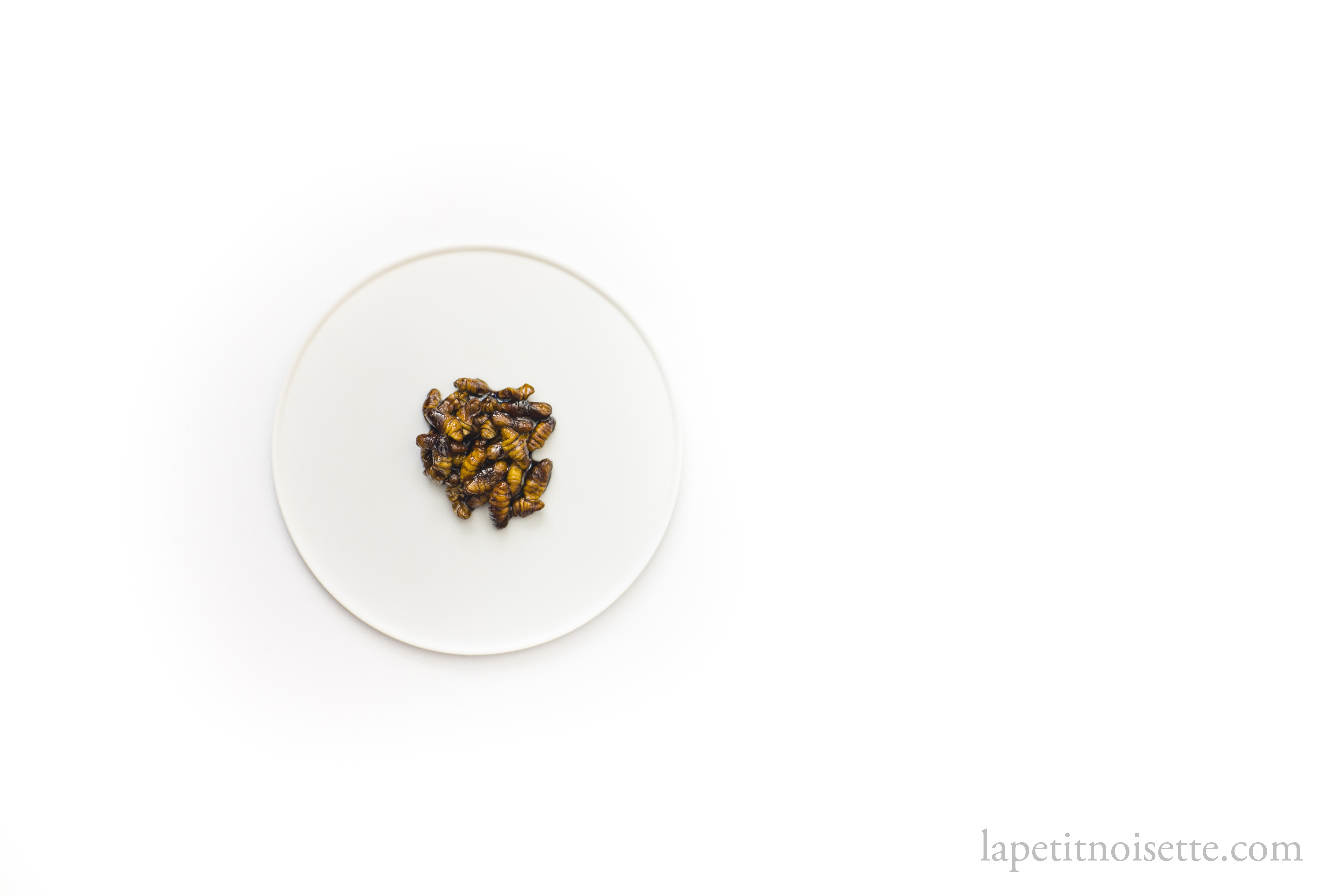
Cooked Silkworm Recipe 蚕サナギ佃煮の作り方
Would this site really be complete without a recipe for eating insects? Back when I was completing my undergraduate degree at Oxford, I did my final presentation on human entomophagy (eating insects) right before working at Noma, the restaurant widely known for putting insects on their menu. At Noma, we used to go to the forests to harvest wood ants for various dishes.
To catch these ants, we would place various pieces of cardboard around the ant hill, before disturbing the hill which caused the ants to stream out to defend the nest. As they crawled onto the cardboard, we would then tap the cardboard into a bucket. In order to defend themselves, the ants would spray us with formic acid, and it was this formic acid which gave the ants their prized citrusy bite.
As the number of ants in the buckets increased, the concentration of formic acid that they sprayed increased to a point that ants killed themselves. We would then pour the ants we had collected into containers to bring back to the restaurant. Since then, I’ve always wanted a recipe for an insect dish on my blog.
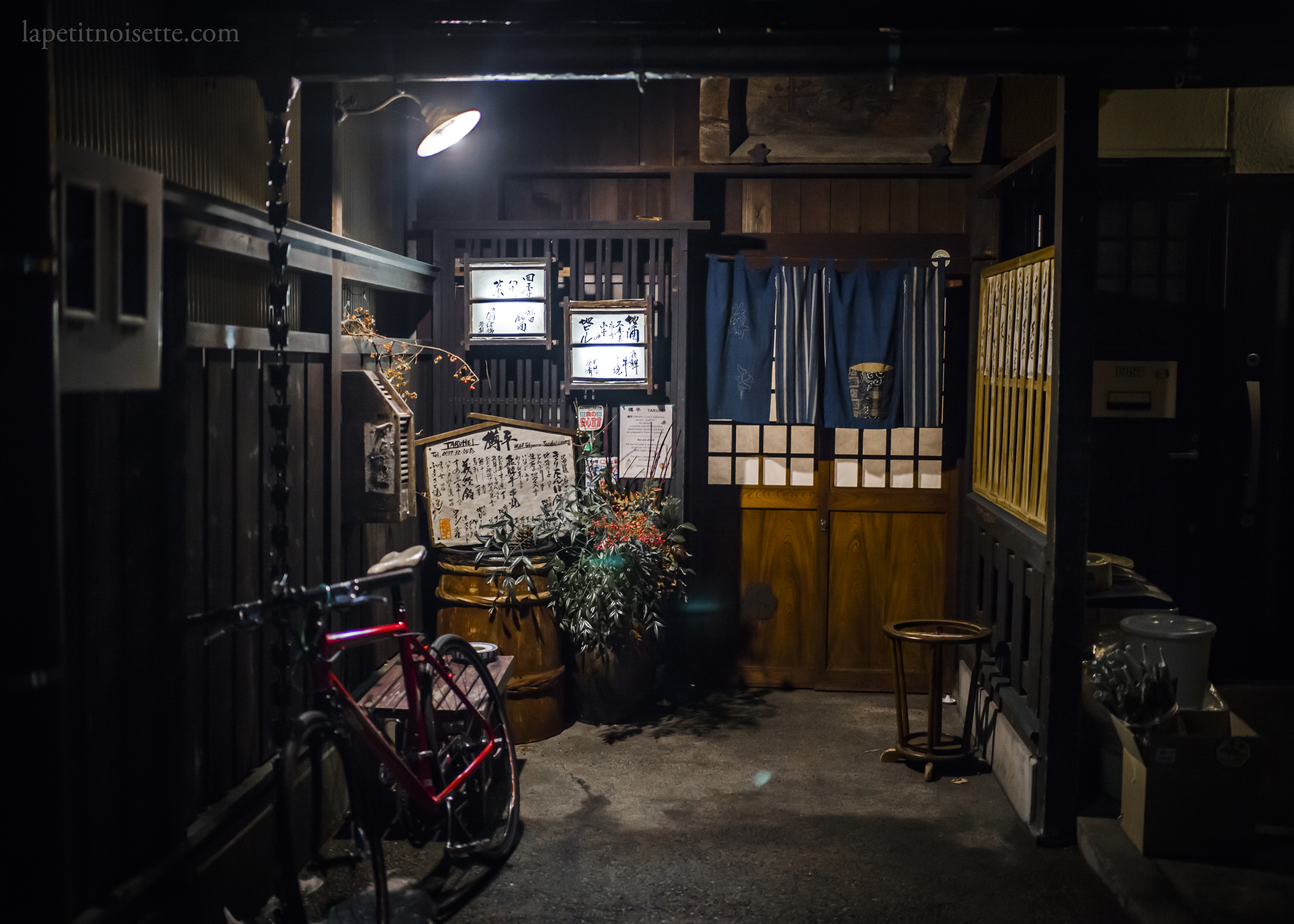
In Japan, there does exist a practice of eating insects in some prefectures, but of course the practice is not widespread, and has been decreasing as people modernise their diet. My first experience eating insects in Japan was at a small local restaurant called Taruhei (樽平) in Takayama, a city in Gifu Prefecture. At the lady owner’s recommendation, I was lucky enough to try jibachinoko (地蜂の子) which is a traditional winter delicacy of Takayama that consists of wasp larvae harvested by digging up wasps’ nests before being prepared it tsukudani-style where it is simmered in sugar/mirin, sake and soy sauce until the simmering liquid has dried up. The final product’s high salt content helps to preserve the insects, whilst also making it a great accompaniment for rice or as a side while drinking sake.
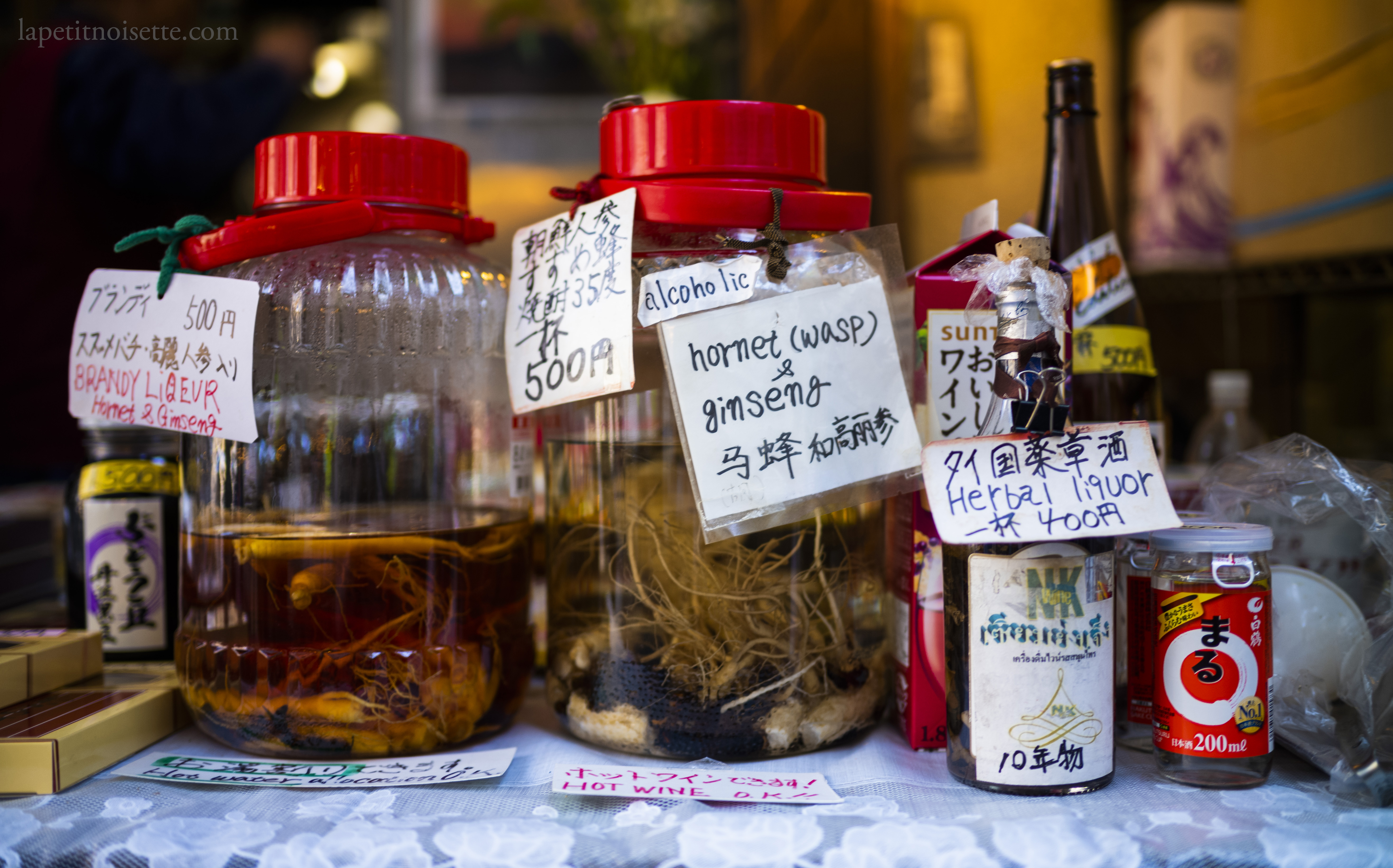
Probably the most famous example of insect’s culinary use in Japan however, has to be liquor made by stepping Japanese giant hornets, known as suzumebachi (Vespa mandarinia japonica/大雀蜂/スズメバチ) in shochu. These hornets are the largest in the world, and have to be caught alive before being drowned in shochu. As they drown, they’re said to release their venom into the shochu which needs to be fermented for at least 3 years to neutralize the toxins.
This liquor was made famous due to the giant hornet’s reputation to occasionally kill people. If you’re lucky, you’ll be able to find an izakaya or stall at a large market that sells this liquor (スズメバチ酒). Compared to the classic umeshu, this is definitely more out of the normal drink.
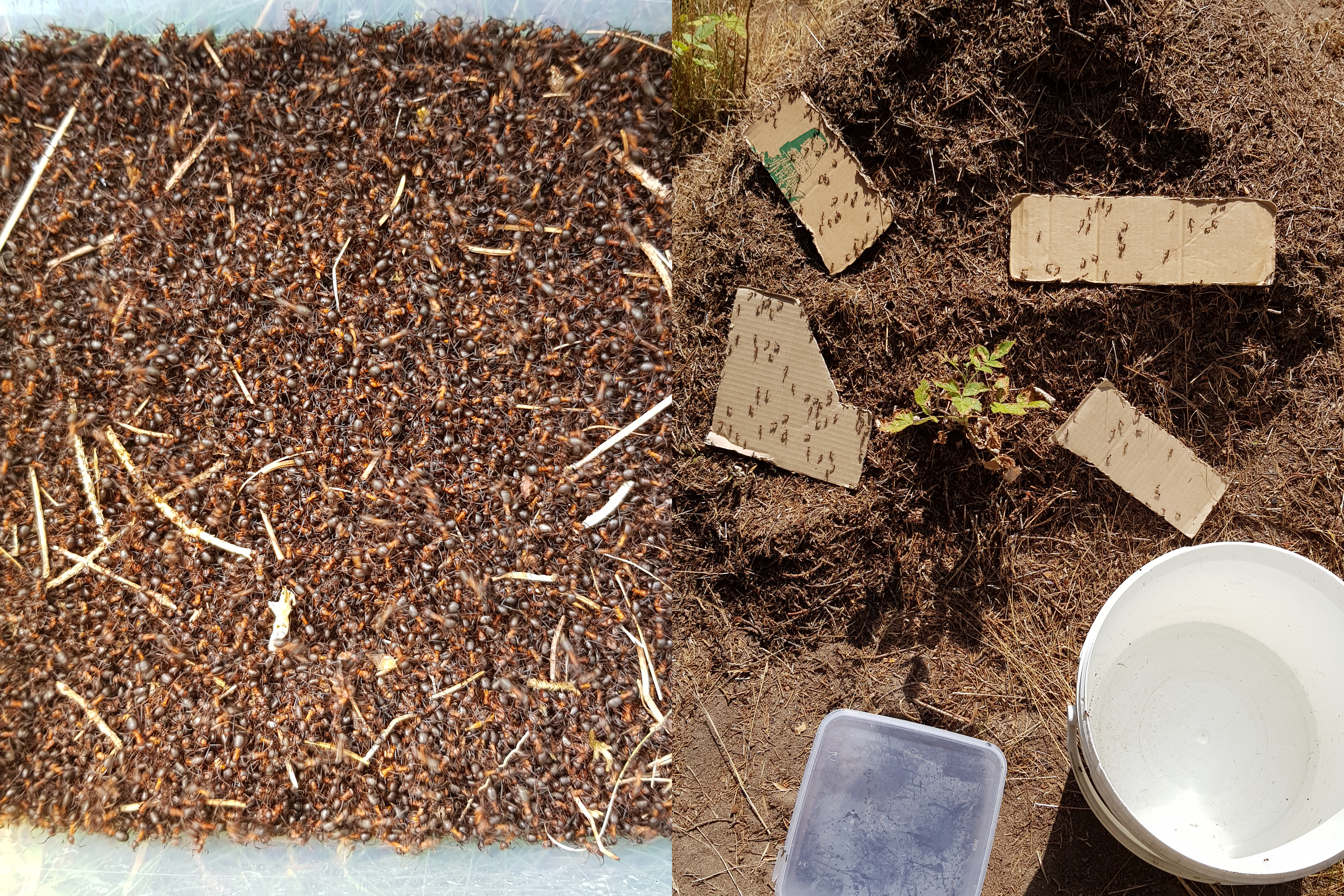
In this article, we’ll be making another Japanese insect recipe similar to the tsukudani wasp larvae, but using silkworm larvae pupae (かいこのサナギ), which is more widespread around the world. This recipe came about from Japan’s old tradition of sericulture where silkworms were cultivated to produce silk. Remarkably, silkworms (bombyx mori) formed their cocoons in one continuous thread of silk and therefore it was crucial to kill off the silk moths before they emerged from the cocoon, as they would break apart this continuous thread on their way out, rendering the silk useless. To do this, the cocoons were either boiled or heated with hot air until the pupae inside died before the cocoons were unwound and weaved into silk thread. This left behind plenty of pupae around which somewhere along the lines became incorporated into traditional recipes. As the production of silk declined in Japan due to cheaper synthetic materials, so too did the consumption of silkworm tsukudani.
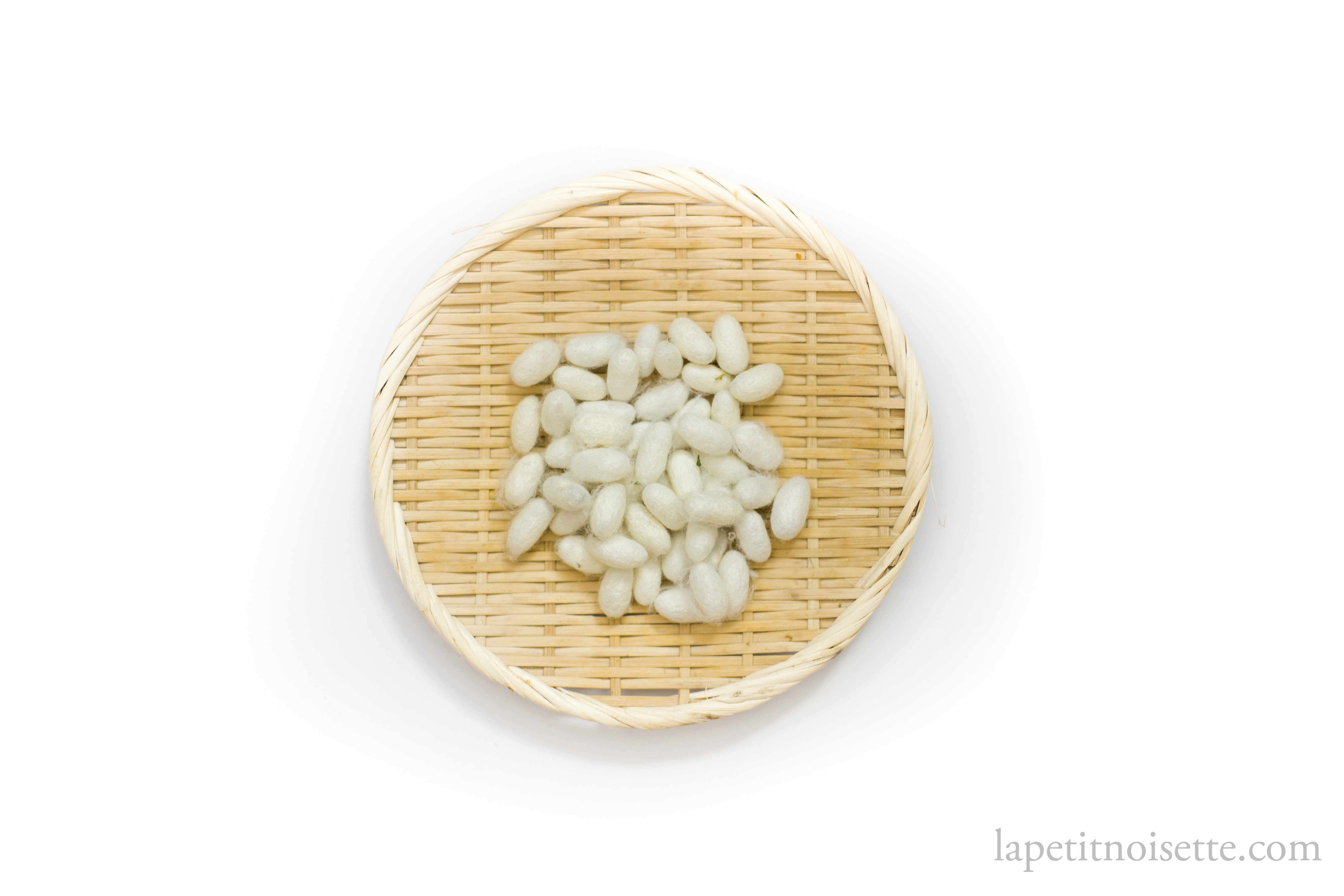
For this recipe, there was the option to just buy raw silkworm cocoons to harvest the pupae from, but in the end I decided to grow my own silkworms from eggs. As silk production spread across the world, so too did the silkworm and you can now very easily order silkworm eggs through the internet in most countries if you yourself want to try this recipe. Silkworms are very particular eaters and will only dine on white mulberry leaves (桑の葉). Here, you either have to find your own source of mulberry leaves or to buy silkworm food from the store you brought the eggs from.
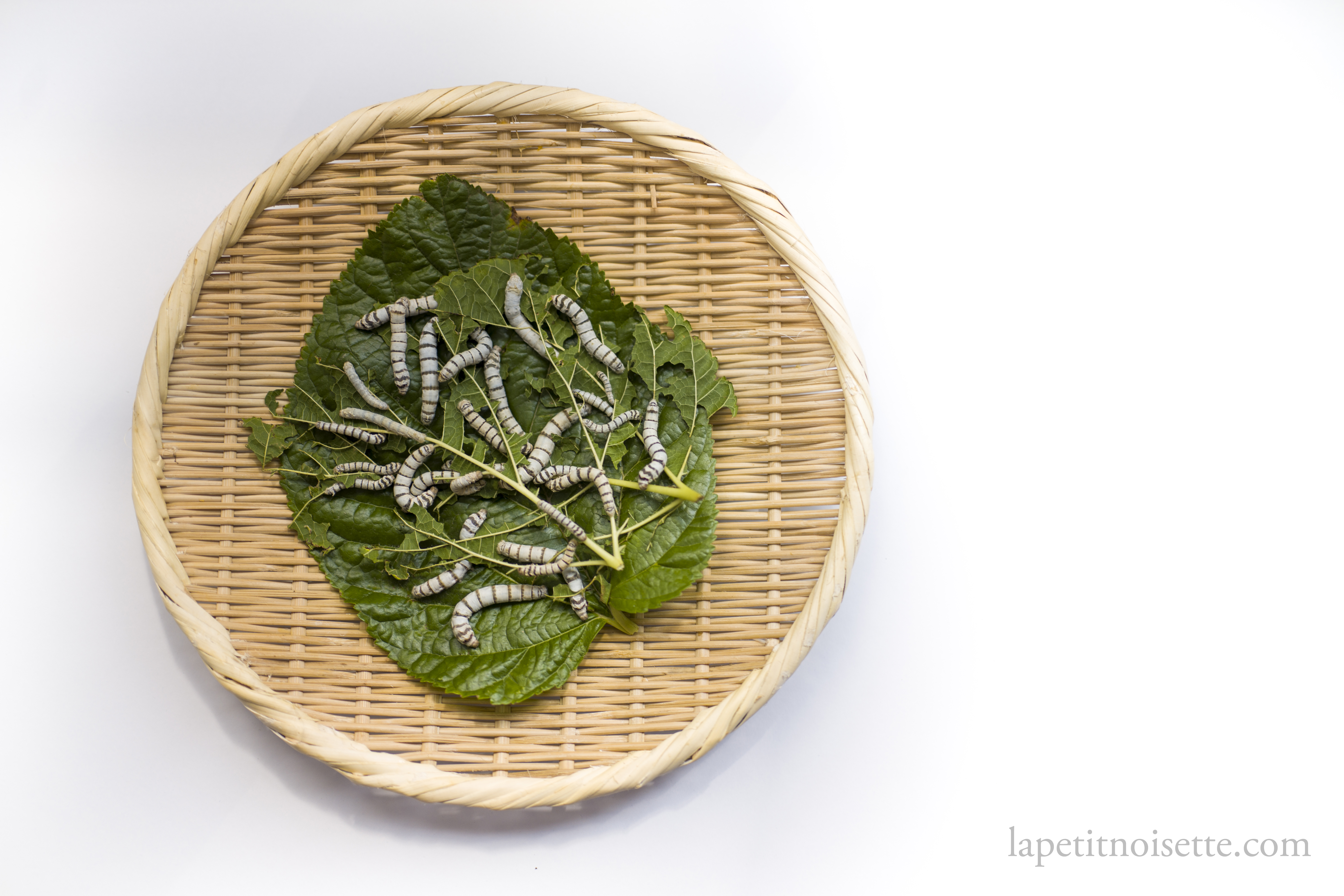
Taste-wise, most people say that insects taste very much like shrimp, possibly because most crustaceans and insects have their exoskeleton made out of chitin (this is my very unscientific-based guess). The silkworm pupae tsukudani are no different but I found them to have quite a concentrated taste of mulberry leaves which can be particularly grassy (which is one of the reasons mulberry leaves are sometimes used as a matcha substitute).
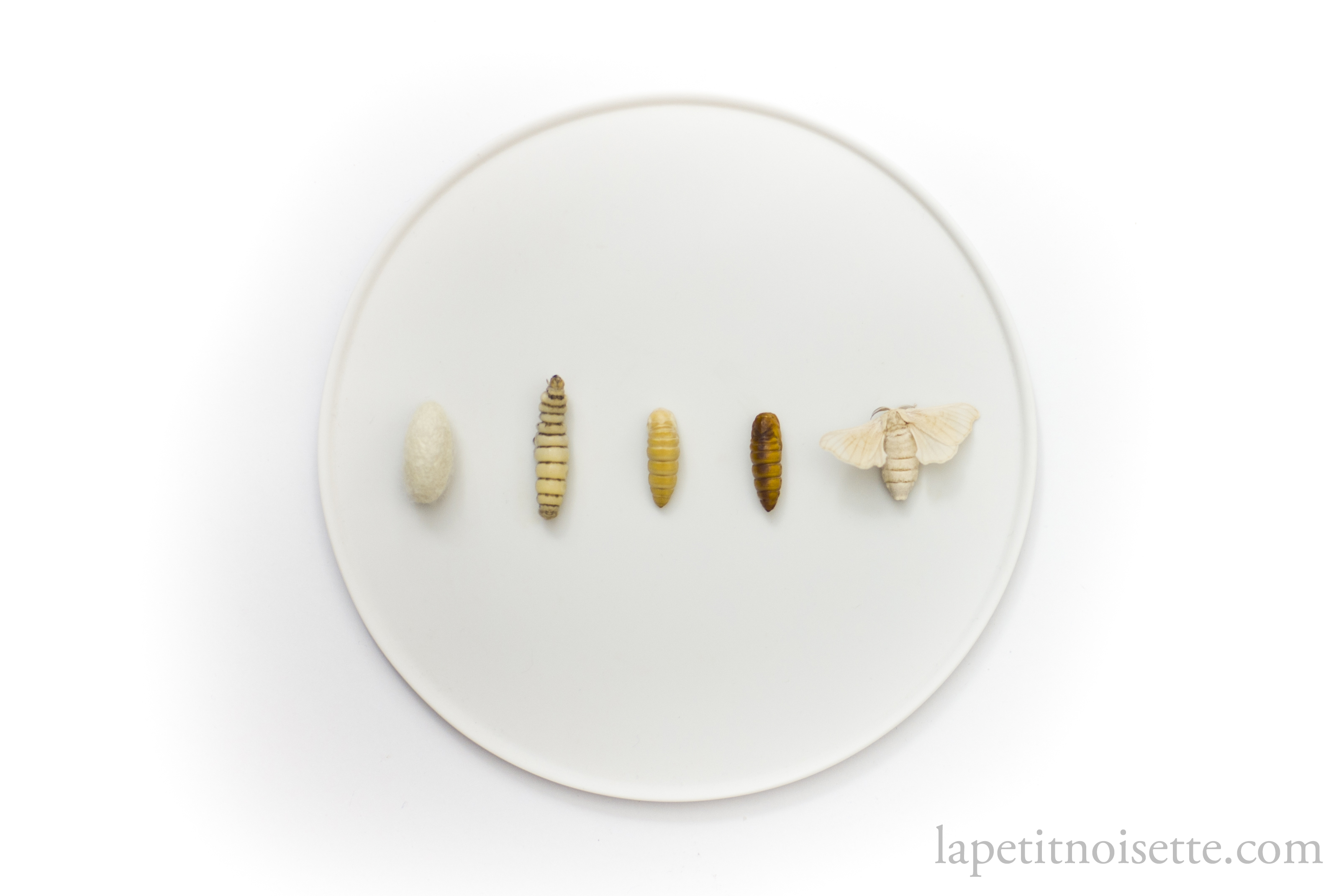
Silkworms have 5 instars, which means they will molt their skin 4 times before spinning their cocoon. During this time, they’ll consume a lot of mulberry leaves. I’m not going to write a lot of information on raising them as there’s plenty of information online. However, there’s one key piece of information which is a bit harder to find, which is that you need to kill the pupae to harvest 5 days after they start spinning their cocoon. Since it takes them around 2 days to spin their cocoon, that means 3 days after the cocoon is fully formed. If you harvest the pupae before that, they will still be squishy and worm-like and are not ready for consumption. You can still cook them using the same recipe but the resulting texture will not be correct. Even worse, the cooked pupae may sometimes still have excess silk in the body that it hasn’t spun, which I heard can form into a tough lump inside the pupae after cooking.
Silkworm Pupae Simmered in Soy Sauce 蚕のさなぎの佃煮
50g of Silkworm cocoons to yield 30g of silkworm pupae
20g of granulated sugar
15ml of soy sauce
15ml of sake
2g of salt
Small knob of ginger to taste (optional)
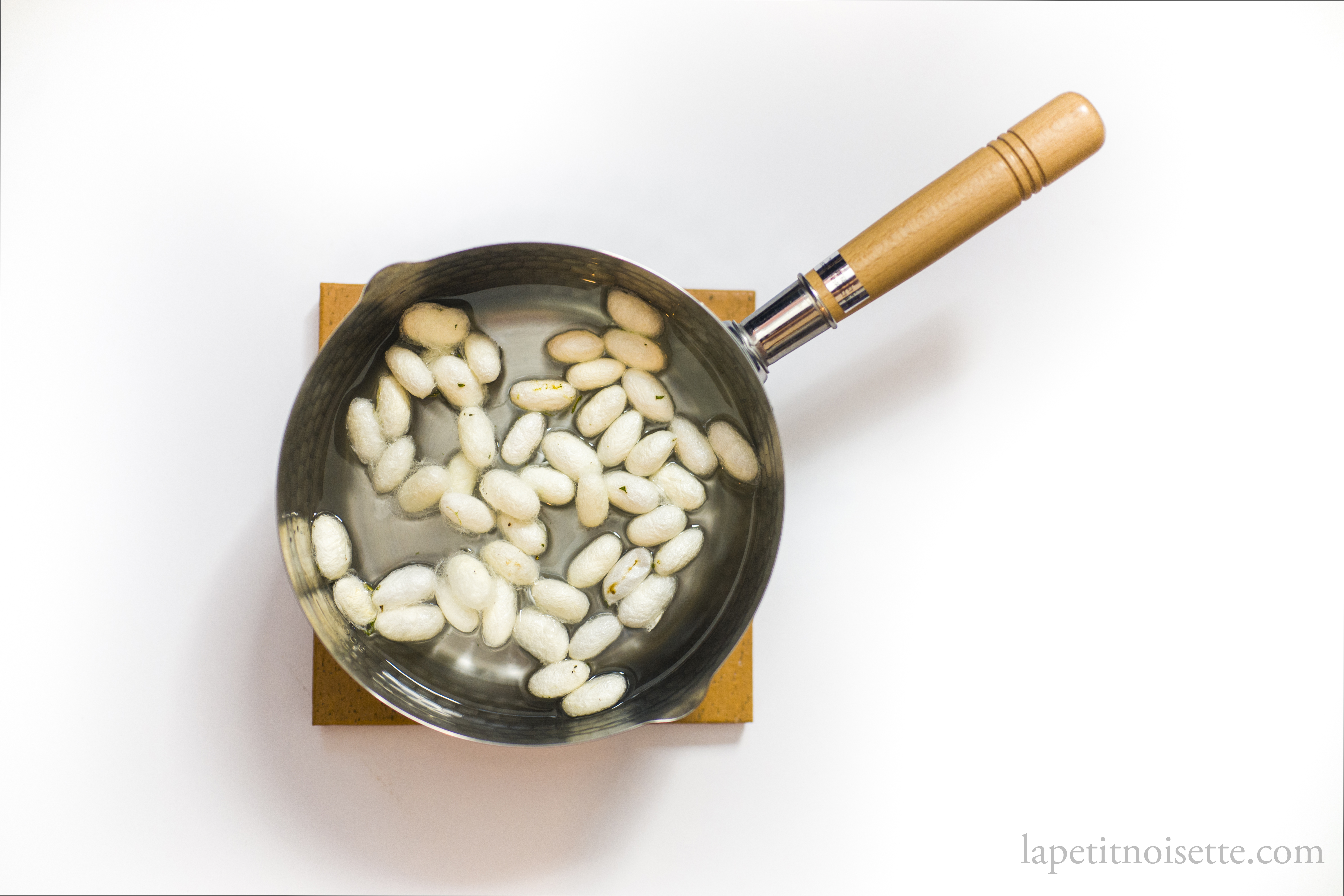
Once your cocoons are ready to harvest. Add them to a large pot of water and bring them up to a boil. Once boiling. Lower the heat to simmer for 5 minutes. At this point, the water should become brown and murky. Strain out the cocoons and cut a hole at the top of each cocoon with scissors and remove the pupae inside.
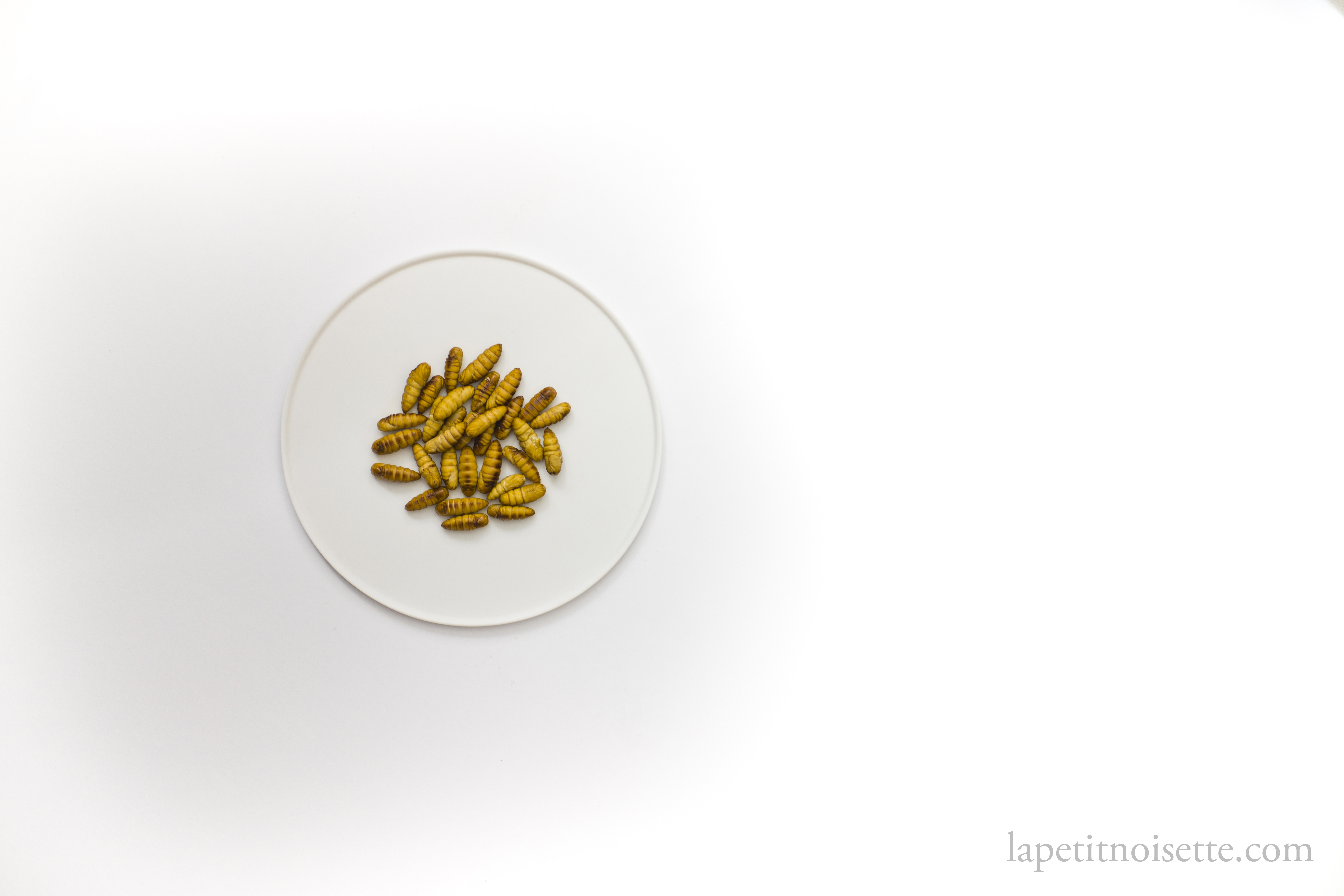
Add the pupae to a fresh batch of water and bring to a boil once more for 10 minutes. Strain out the pupae and discard the water. If the smell of the insects is quite strong, repeat this step another time.
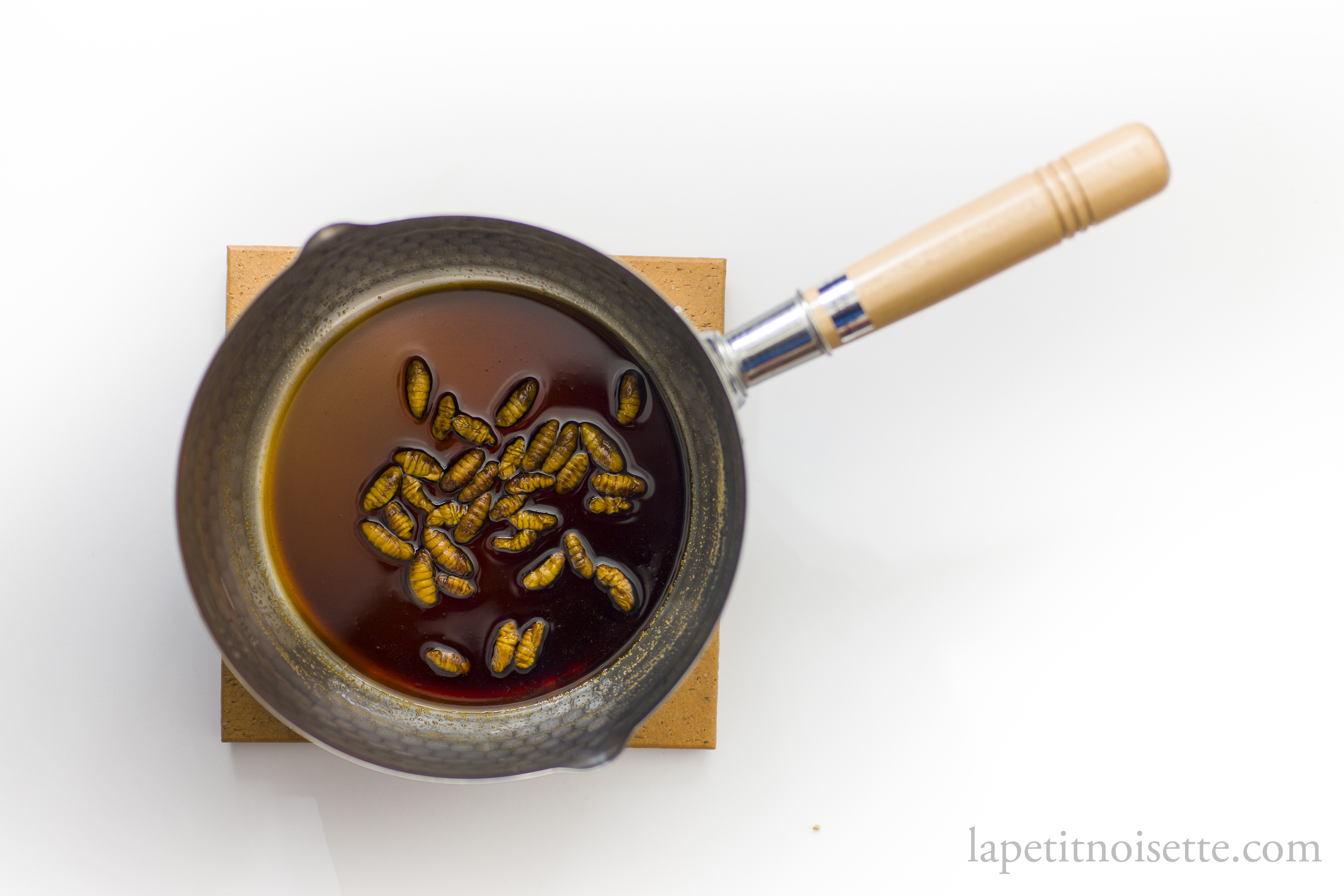
Add the pupae to a small pot and add in the sugar, soy sauce, sake and ginger (if using). Fill the pot with water until the pupae are covered (a thin layer) and simmer for 30 minutes. You’ll need to occasionally stir the pot or shake to prevent burning at the bottom. Add more water if too much water evaporates. Keep adding water until you’re close to the 30 minute mark, at which point you want to start reducing the sauce until the pupae are coating with a thick glaze. You know you’re almost there when the sauce starts splattering and almost popping out from the pot. At this point, keep swirling the contents of the pot and lower the heat, take it on and off the heat again and again so that it doesn’t burn. The entire surface of the pot should be bubbling. One reduced to the point that the pupae have a shiny glaze on them, store in a container and chill in the fridge before serving.
Notes:
The flavour of ginger can help mellow out the taste of the insects if you find it particularly strong. Add ginger to your preference. It also adds some spice to balance out the sweetness.
This recipe calls for a high amount of sugar, which tends to be the case from some tsukudani recipes. It helps preserve the food for a long time but if you think it’ll be too sweet you can try to reduce the sugar a little. If you intent to eat it very quickly and not store it, I’d recommend adding a dash of vinegar to round out the flavours.
The insects are cooked for a long time to allow the flavours to fully penetrate the pupae. Some other recipes call for pupae to be simmered for 10 minutes before letting it marinade in the fridge overnight, and then repeating the step until the pupae have been simmered for a total of 30 minutes. I don’t find that it makes a large difference to the taste of the pupae so I opted for one continuous 30 minute simmer.